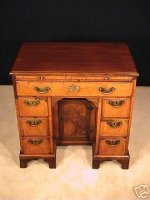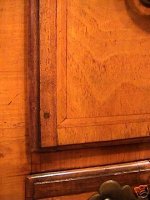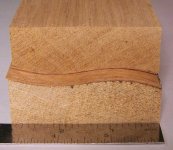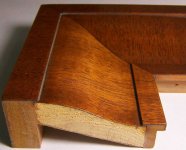Woodmolds
Well-known member
When veneering are there times when a balanced panel is not necessary? Such as a small panel say 8” X 20” that will be incorporated into a box(or drawer front) that has dovetailed or rabetted corners. Would a core of say maple with a veneer of curly maple on one side be acceptable. If it needed veneer on both sides would curly on one side and plain on the back work (i.e. both sides same species)? Is it acceptable to use a solid wood of lower quality(knot free) as a core and face veneer both sides? Would it be better to use the core material that is the same species as the faces or would secondary woods work just as well? When using materials as cores is plain sawn as good as quarter sawn? Are some species better than others as cores? Hardwood? Softwood?
My reasoning for these questions is I want to do some panels for chest, cases and drawer fronts and make use of some figured veneers I have, but have a hard time coming to grips with using MDF cores. I have the equipment (or access to) that would make it fairly easy to produce the cores I need for most any size panel I would use. I’m looking to produce panels that will last many years with minimal deterioration (splitting & warping). Will the extra effort be successful?
Thanks, Tony
My reasoning for these questions is I want to do some panels for chest, cases and drawer fronts and make use of some figured veneers I have, but have a hard time coming to grips with using MDF cores. I have the equipment (or access to) that would make it fairly easy to produce the cores I need for most any size panel I would use. I’m looking to produce panels that will last many years with minimal deterioration (splitting & warping). Will the extra effort be successful?
Thanks, Tony




